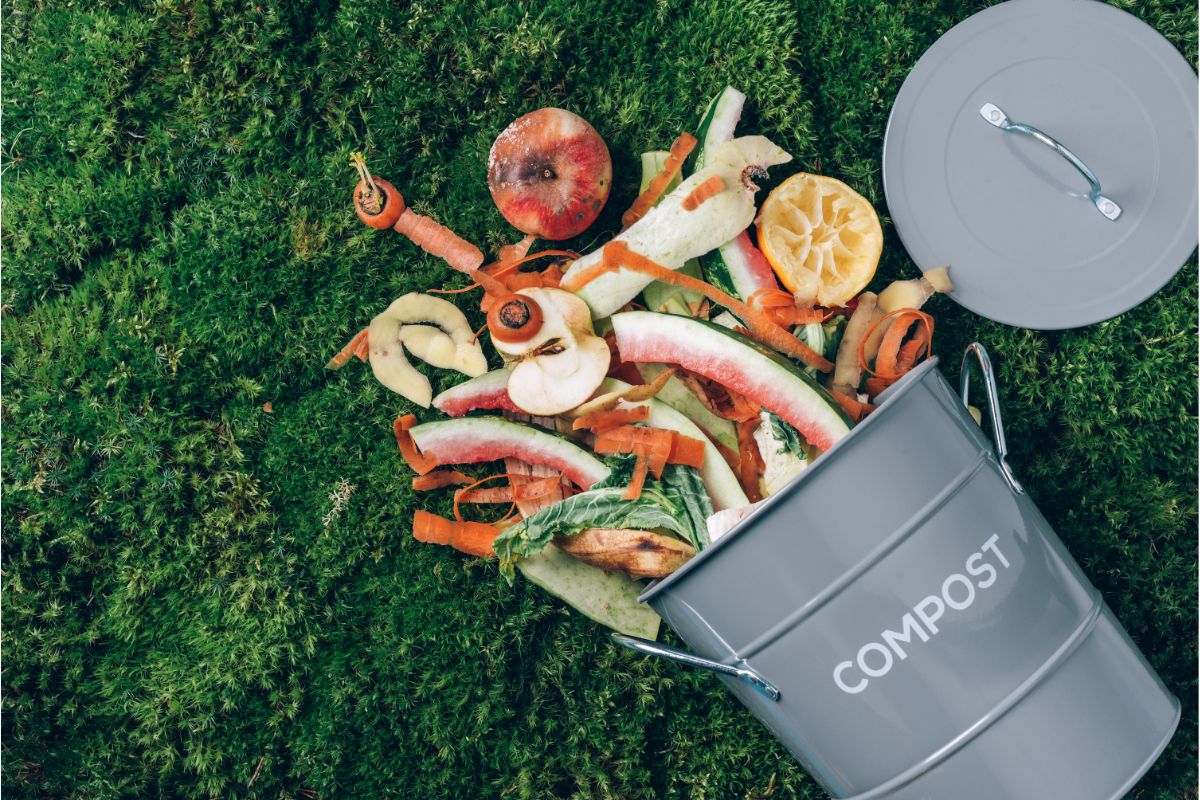
Composting 101: Turning Food Scraps into Garden Gold
Are you cooking up a storm? Don’t forget to save the peels! Yes, you read that right.
Kitchen scraps are pure gold for your garden. Erm, not the kind you can turn into jewelry. But gold, nevertheless. All you have to do is start composting, and voila! You have your own natural nutrition-rich fertilizer that will help your plants flourish.
Choosing to compost means wisely managing waste while embracing sustainable living. Infact, it also helps with soil rejuvenation. Thanks to the compost, soil becomes more resilient to environmental stressors such as drought and erosion.
To put it simply, composting offers an easy way to discard your kitchen scraps, keep the planet happy, and ensure your garden is thriving. What more can we ask?
But how can you get started? Fret not! Our composting 101 has you covered. Keep reading.
What Is Compost?

Did you know? Compost is actually known as Black Gold because of all the benefits it fetches to the soil. But what really is compost?
Well, compost is nature’s recycling system at its finest!
Compost comes from your kitchen scraps like fruit peels, vegetable leftovers, and even things like eggshells and coffee grounds.
When you put the organic waste together, over time, with the help of tiny creatures like bacteria, fungi, and worms, these scraps start to decompose. That means they break down into smaller pieces until they become something called compost.
Now, this compost is nutrient-rich. It makes the soil healthier, and your plants thrive.
List Of Things You Can Compost
Here’s a list of all the common things that you can compost:
- Fruit and vegetable scraps
- Coffee grounds and organic filters
- Tea bags made with natural fibers
- Eggshells
- Nutshells (no walnut shells)
- Grass clippings
- Leaves
- Straw and hay
- Shredded newspaper
- Cardboard
- Paper towels and napkins
- Wood chips and sawdust
- Houseplant trimmings and dead leaves
- Seaweed
- Fireplace ashes in moderation
- Hair and pet fur
- Cotton and wool fabric scraps
- Dryer lint, if made from natural fibers
- Used potting soil
- Leftover cooked vegetables without oil or sauces
- Spoiled fruits and vegetables
- Bread and grains
- Stale cereal and crackers
List of Things You Cannot Compost
Here’s a list of all the things you must never put in your compost bin:
- Meat and fish
- Dairy products
- Oily or greasy foods
- Processed foods
- Diseased plants or plant parts
- Weeds with mature seeds
- Pet waste
- Coal or charcoal ash
- Plastic or synthetic materials
- Glossy or colored paper
- Pressure-treated wood or sawdust
- Cat litter
- Human waste
- Pesticide-treated plants or plant parts
- Metallic materials
How To Start Composting?
These steps will help you kickstart your composting journey almost effortlessly. Take a look!
Find An Ideal Location
Before you start gathering the materials to compost, find the ideal spot. It can be anywhere in your garden or balcony. Make sure it is away from direct sunlight as it can otherwise dry out too quickly.
Choose A Compost Bin
Today, you will find a variety of compost bins in the market. You can choose them based on the approximate amount of food waste you generate.
A Mix Of Green and Brown Material
When it comes to composting, remember to strike the balance between green and brown. Greens are nitrogen-rich items like fruit and vegetable scraps, grass clippings, and coffee grounds. Browns are carbon-rich materials like dried leaves, straw, and shredded newspaper.
Layer the Materials
Start by adding a layer of browns followed by a layer of greens. Continue layering in this manner. However, make sure to keep the pile moist but not soggy. Go for a ratio of about 2 parts browns to 1 part greens by volume.
Turn and Aerated
To speed up the composting process and prevent odors, turn the compost pile regularly with a pitchfork or compost turner to aerate it. This helps introduce oxygen, which is essential for decomposition.
Monitor Moisture and Temperature
Check the moisture level of your compost regularly. It should be damp like a wrung-out sponge. If it’s too dry, add water and if it’s too wet, add more browns. Also, monitor the temperature because compost heats up as it decomposes. This is a sign that it’s working.
Be Patient
Composting takes time, usually up to a year, depending on factors like the size of your pile, the materials used, and the environmental conditions. Keep adding materials and turning the pile regularly, and soon you will have nutrient-rich compost ready for your garden!
Use Your Compost
Once your compost is dark, crumbly, and earthy-smelling, it’s ready to use! Spread it in your garden beds, mix it with potting soil for container plants, or use it as mulch to nourish your plants and improve soil health.
Conclusion
Composting isn’t difficult but requires a long-term commitment from your end. It may seem slightly overwhelming in the beginning but don’t worry. Whenever you feel confused, make sure you do your research to ensure you are on the right path.
Remember, by choosing to compost, you are doing your garden and the planet a huge service!
Also Read: 10 Easy Ways to be a Food Waste Warrior!

Prachi, an accomplished Chief-Editor at The Sustainable Brands Journal, has 15+ years of experience in Europe, the Middle East, and India, managing 90+ global sustainable brands. She’s a prolific writer in sustainability, contributing to various publications. Prachi’s unwavering passion and expertise make her a recognized authority, driving positive change and inspiring a sustainable future.





